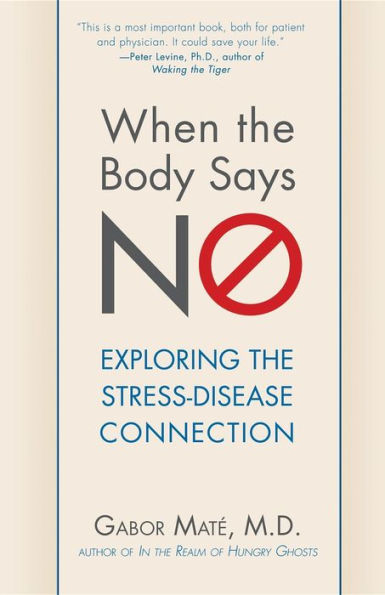"This is a most important book, both for patient and physician. It could save your life."
— Peter Levine, PhD, best selling author of In an Unspoken Voice
"Gabor Maté, M.D., skillfully blends recent advances in biomedicine with the personal stories of his patients to provide empowering insights into how deeply developmental experiences shape our health, behavior, attitudes, and relationships. A must read."
― Bruce Lipton, Ph.D., author of The Biology of Belief
The international bestseller is a groundbreaking exploration of the effects of the mind-body connection on stress and disease ― and how we can heal.
Through the lens of moving personal stories, medical doctor and best-selling author Dr. Gabor Maté shows how emotion and psychological stress play a powerful role in the onset of chronic illness, cancer, and many other serious illnesses.
Drawing on scientific research and the author's decades of experience as a practicing physician, this book provides answers to important questions about the effect of the mind-body link on illness and health and the role that chronic stress and one's individual emotional makeup play in an array of common diseases.
- Explore the role of the mind-body link in conditions and diseases such as arthritis, cancer, diabetes, heart disease, IBS, multiple sclerosis, autoimmune conditions, and more
- The book draws on years of medical research and the author's own clinical experience as a family physician
- Complete with The Seven A's of Healing – Once you’re ready to acknowledge underlying stress, Dr. Mate guides you forward with principles of healing, management, and the prevention of illness from hidden stress
- Discover dozens of enlightening case studies and personal stories, including familiar names such as Lou Gehrig (ALS), Betty Ford (breast cancer), Ronald Reagan (Alzheimer's), Gilda Radner (ovarian cancer), and Lance Armstrong (testicular cancer)
- An impressive contribution to research on the physiological connection between life's chronic stress cycles, anxiety, and emotions and the body systems governing nerves, immune apparatus, and hormones
"This is a most important book, both for patient and physician. It could save your life."
— Peter Levine, PhD, best selling author of In an Unspoken Voice
"Gabor Maté, M.D., skillfully blends recent advances in biomedicine with the personal stories of his patients to provide empowering insights into how deeply developmental experiences shape our health, behavior, attitudes, and relationships. A must read."
― Bruce Lipton, Ph.D., author of The Biology of Belief
The international bestseller is a groundbreaking exploration of the effects of the mind-body connection on stress and disease ― and how we can heal.
Through the lens of moving personal stories, medical doctor and best-selling author Dr. Gabor Maté shows how emotion and psychological stress play a powerful role in the onset of chronic illness, cancer, and many other serious illnesses.
Drawing on scientific research and the author's decades of experience as a practicing physician, this book provides answers to important questions about the effect of the mind-body link on illness and health and the role that chronic stress and one's individual emotional makeup play in an array of common diseases.
- Explore the role of the mind-body link in conditions and diseases such as arthritis, cancer, diabetes, heart disease, IBS, multiple sclerosis, autoimmune conditions, and more
- The book draws on years of medical research and the author's own clinical experience as a family physician
- Complete with The Seven A's of Healing – Once you’re ready to acknowledge underlying stress, Dr. Mate guides you forward with principles of healing, management, and the prevention of illness from hidden stress
- Discover dozens of enlightening case studies and personal stories, including familiar names such as Lou Gehrig (ALS), Betty Ford (breast cancer), Ronald Reagan (Alzheimer's), Gilda Radner (ovarian cancer), and Lance Armstrong (testicular cancer)
- An impressive contribution to research on the physiological connection between life's chronic stress cycles, anxiety, and emotions and the body systems governing nerves, immune apparatus, and hormones

When the Body Says No: Exploring the Stress-Disease Connection
320
When the Body Says No: Exploring the Stress-Disease Connection
320Paperback(First Edition)

Product Details
| ISBN-13: | 9780470923351 |
|---|---|
| Publisher: | TURNER PUB CO |
| Publication date: | 01/01/2011 |
| Edition description: | First Edition |
| Pages: | 320 |
| Sales rank: | 26,529 |
| Product dimensions: | 5.40(w) x 8.40(h) x 1.00(d) |
